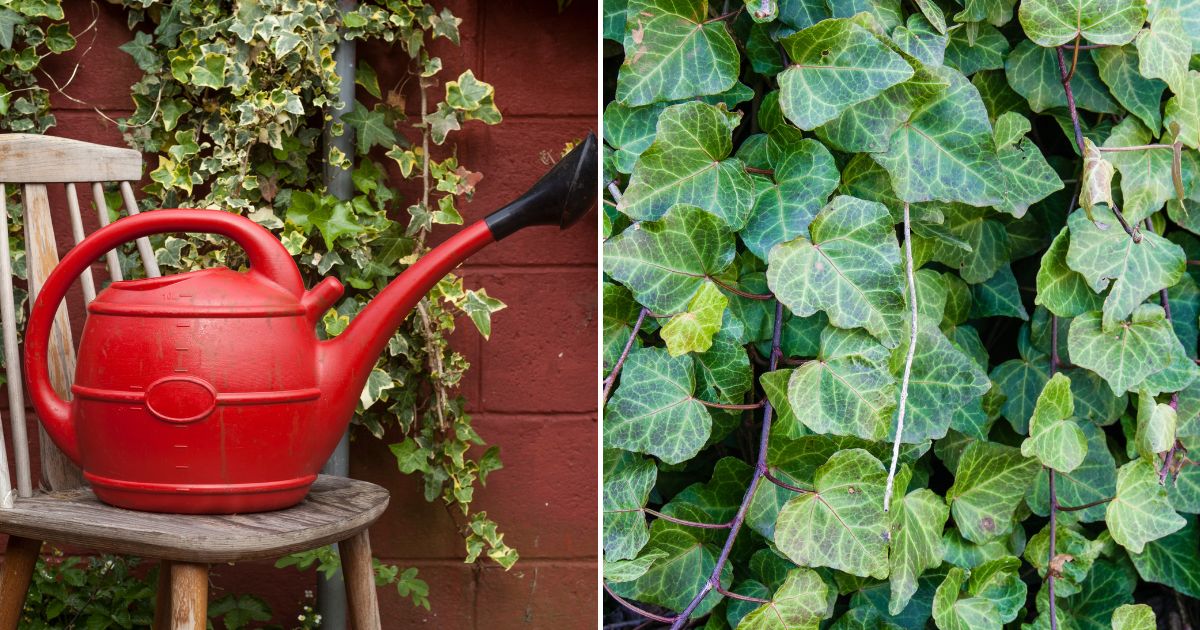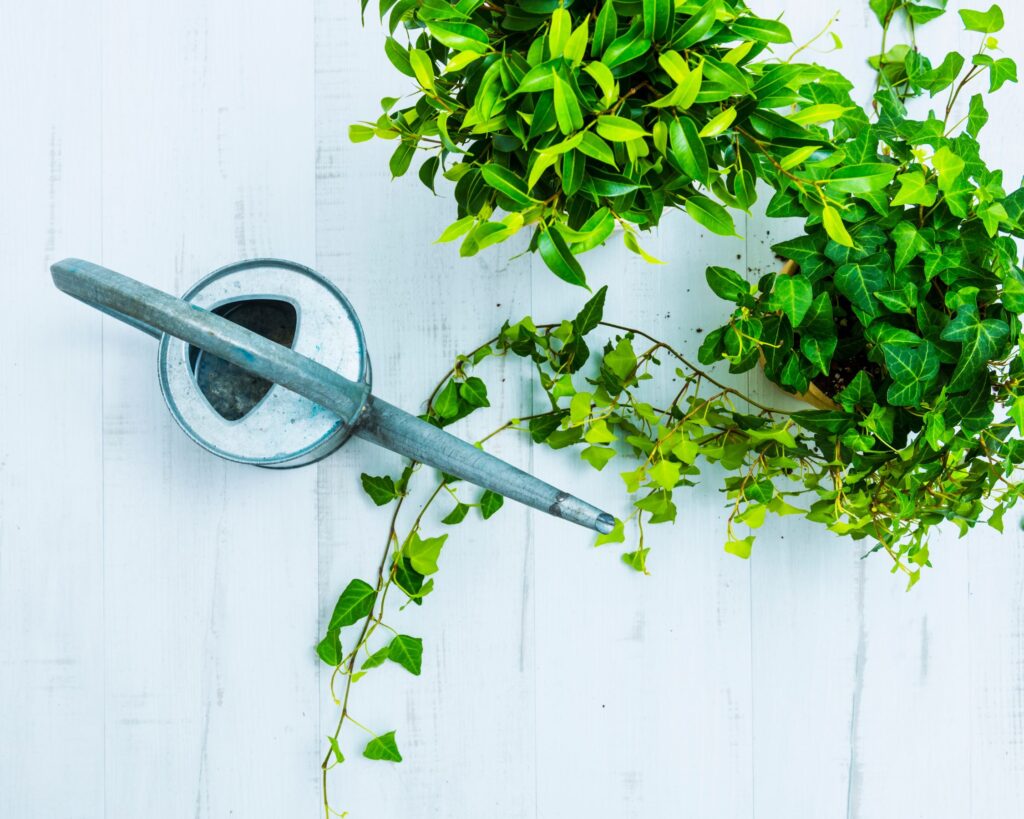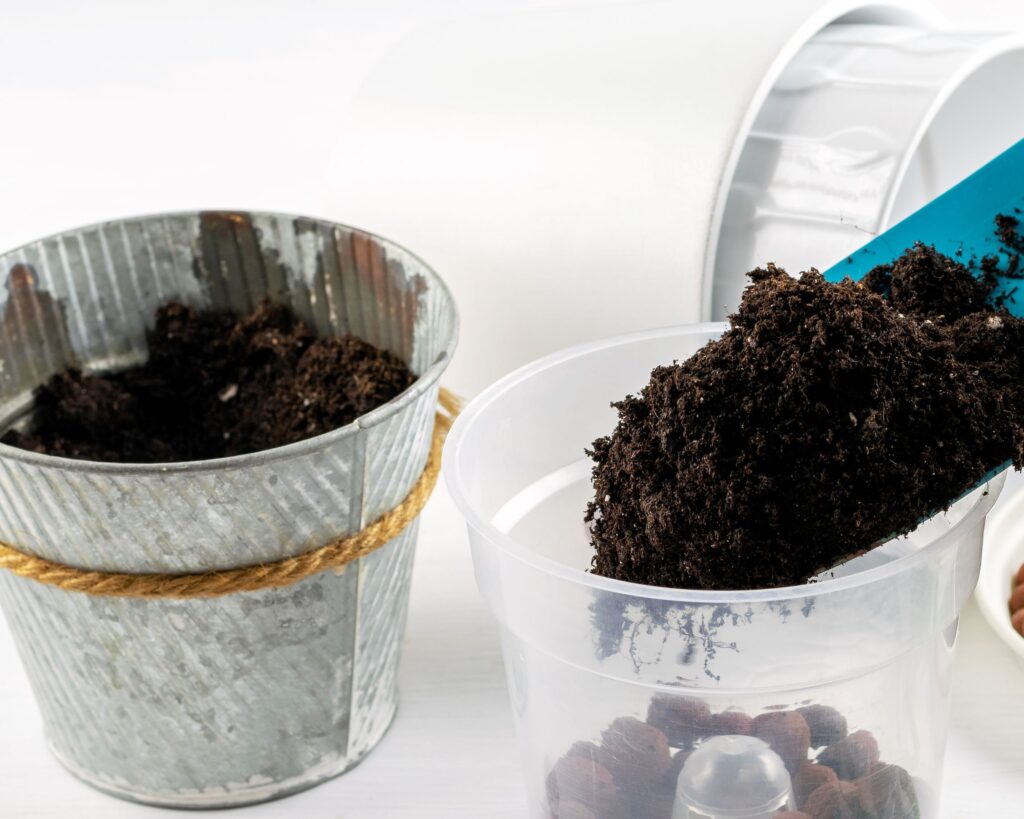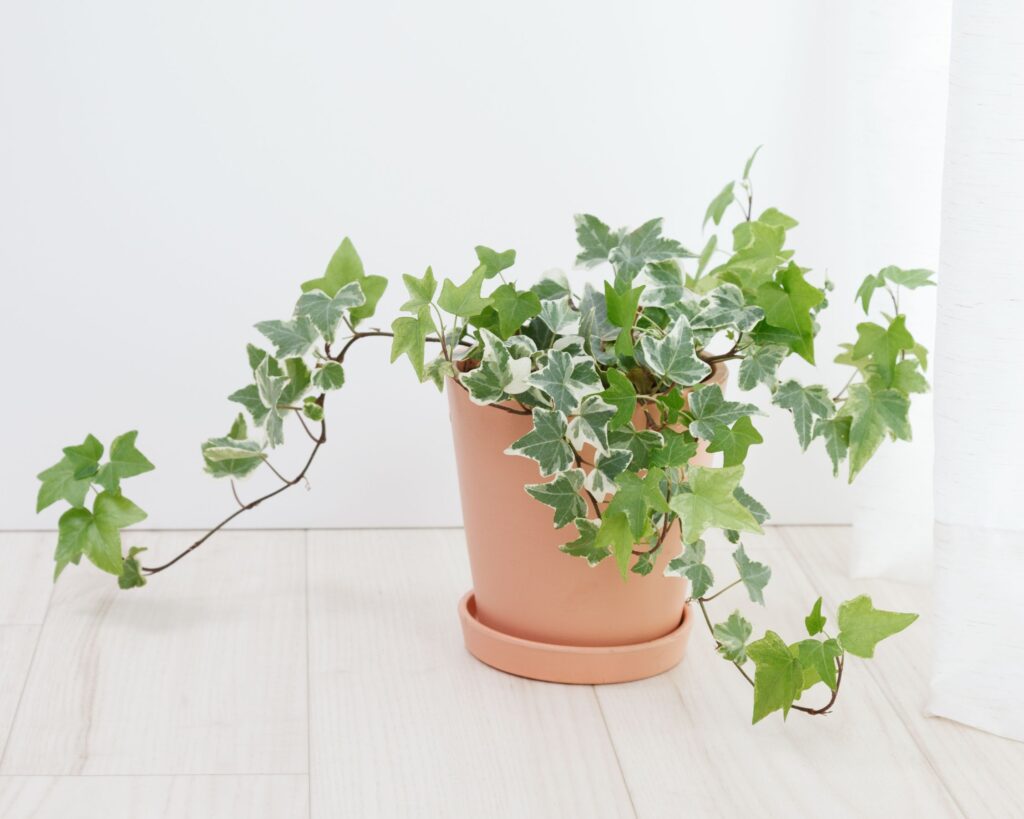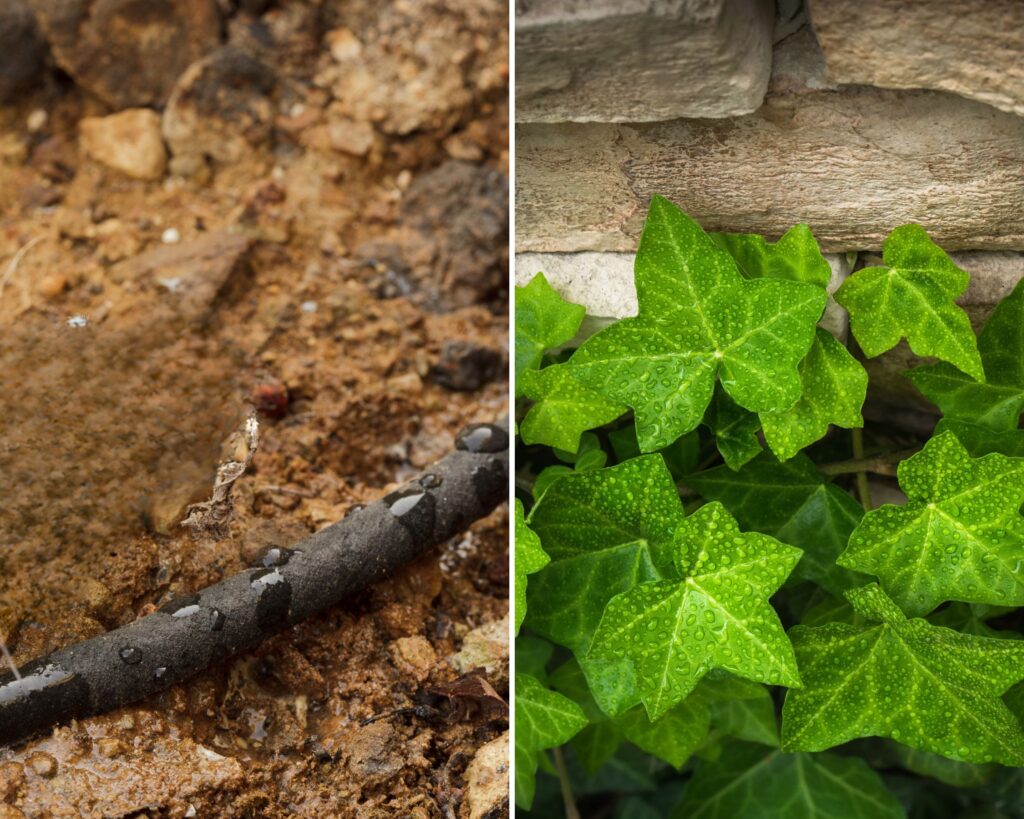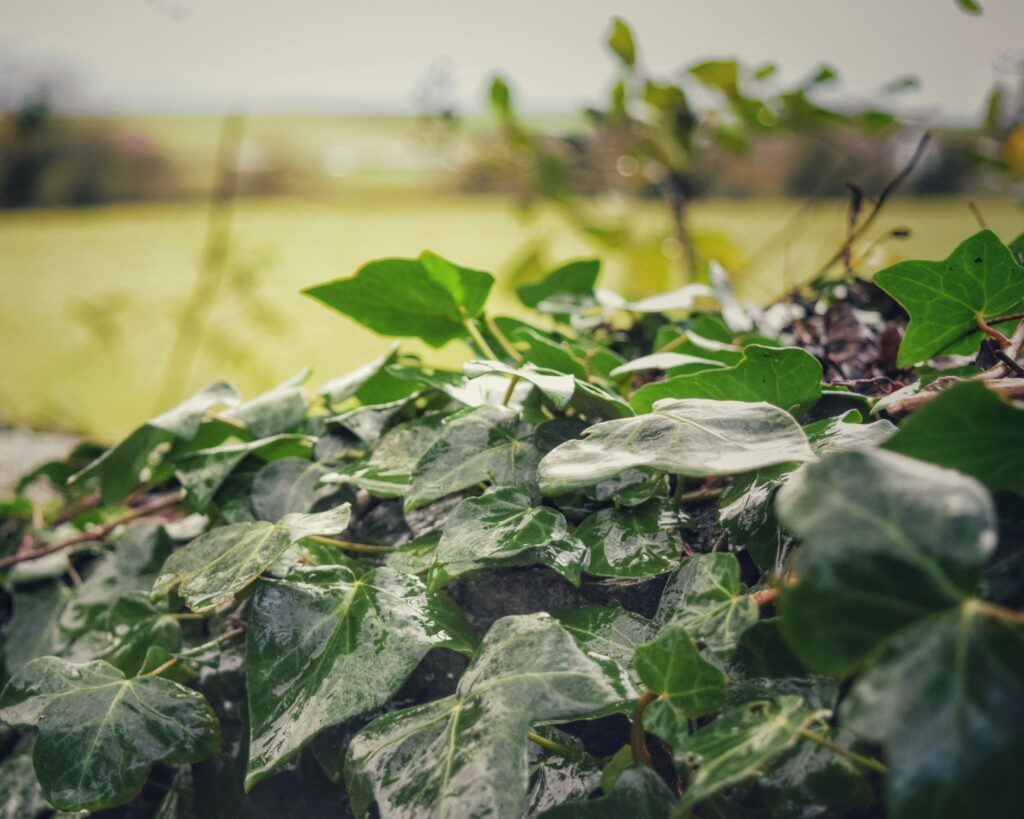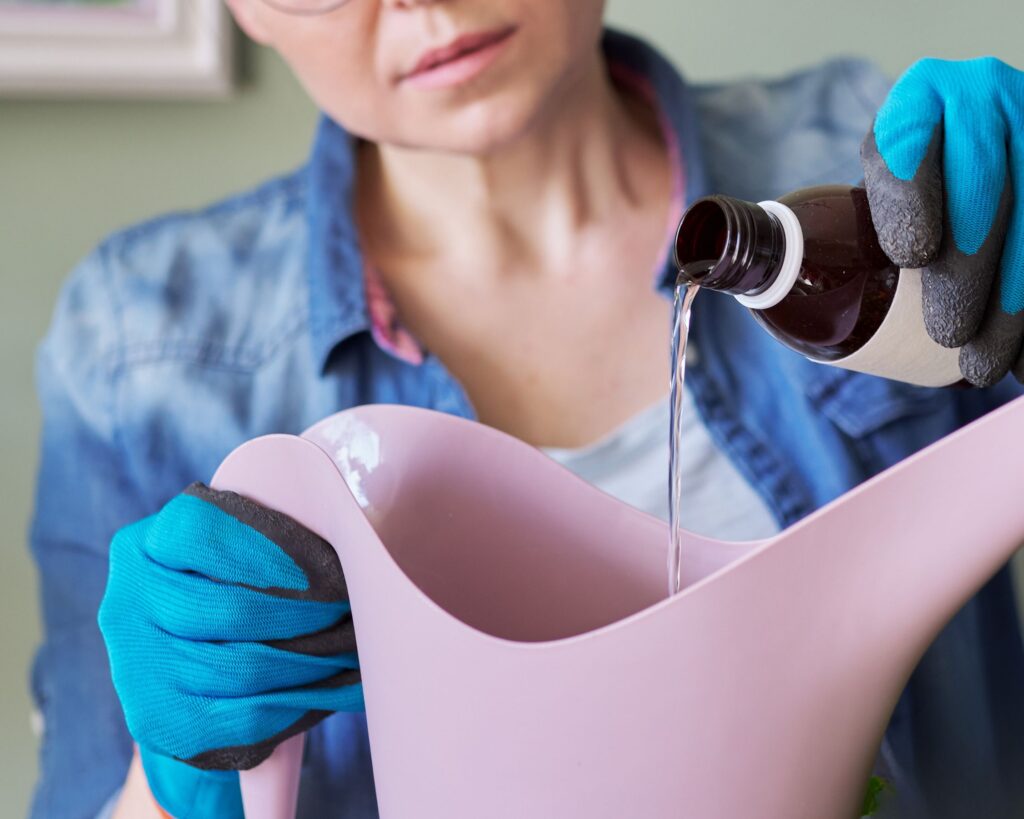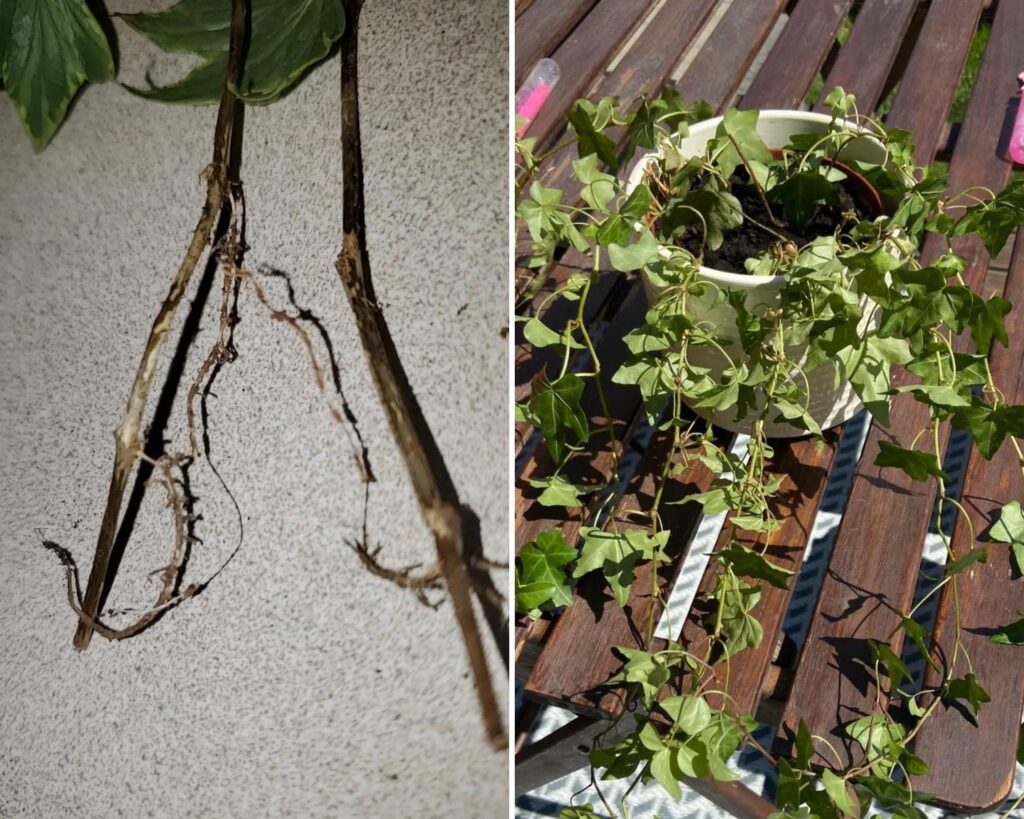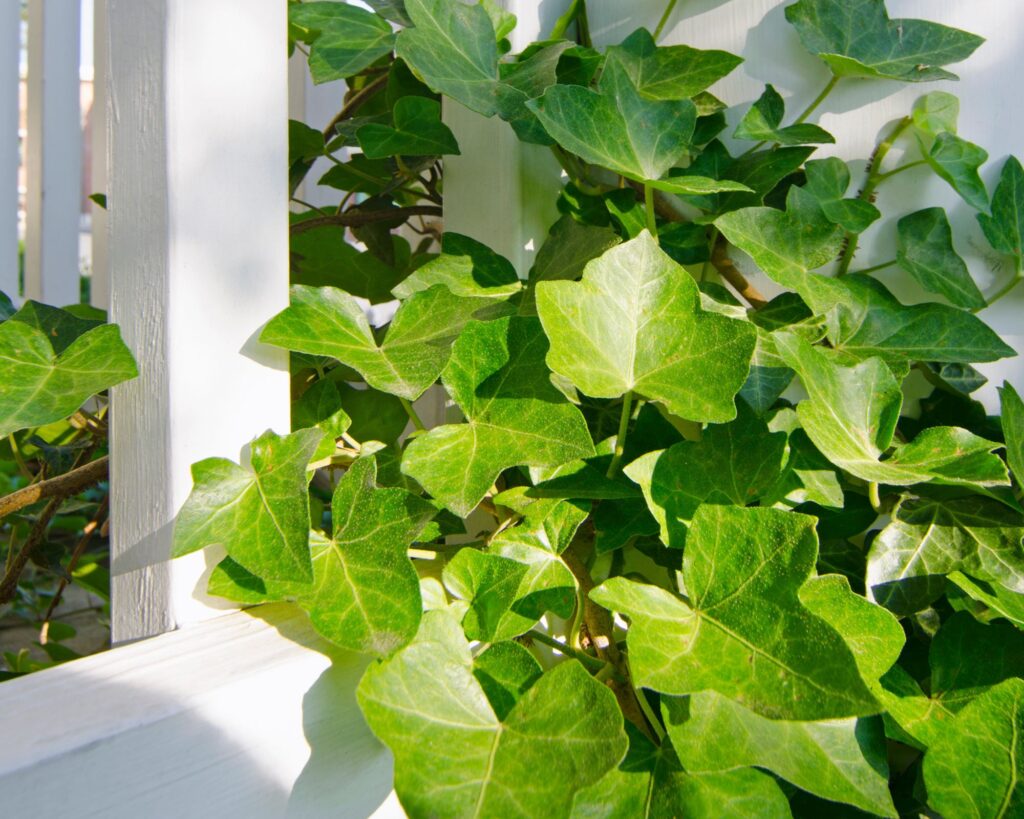English Ivy (Hedera helix) is a plant that promises to bring life and elegance to any corner of your home or garden with its vibrant, trailing vines. But here’s the catch – its beauty hinges on one crucial aspect: the way you water it.
Get it right, and your Ivy will thrive, gracing your space with lush greenery. Get it wrong, and you might be left wondering why your plant isn’t living up to its potential.
In this guide, we’ll explore the art of watering English Ivy, sharing the best techniques to keep your plant flourishing, no matter where it grows.
Understanding English Ivy’s Natural Habitat
To properly care for English Ivy, it’s essential to understand its natural habitat. Native to Europe and Western Asia, English Ivy typically grows in woodland areas where it can climb up trees or spread across the forest floor.
These environments are characterized by shaded conditions and consistent moisture, but not waterlogged soil.
English Ivy is accustomed to moderate watering, which is why overwatering is one of the most common mistakes made by its caretakers.
The Importance of Proper Watering
Watering is crucial for the health of English Ivy, as it directly affects the plant’s ability to absorb nutrients, photosynthesize, and grow.
However, improper watering – whether too much or too little – can lead to a range of issues, including root rot, yellowing leaves, and stunted growth.
The goal is to provide your English Ivy with the right amount of water, at the right time, to mimic its natural environment as closely as possible.
How to Water English Ivy Indoors
When growing English Ivy indoors, the key to successful watering lies in maintaining consistent moisture levels without allowing the soil to become soggy. Here’s a step-by-step guide to watering your indoor English Ivy:
1. Check the Soil Moisture
Before watering, always check the soil moisture level. The top inch of soil should feel dry to the touch before you water. You can use your finger to test the soil or invest in a moisture meter for more accurate readings.
2. Water Thoroughly
When the soil is dry, water your English Ivy thoroughly. It’s important to water the soil directly, rather than just misting the leaves, as the roots are the primary absorbers of water.
Pour water evenly over the soil until you see water draining from the bottom of the pot. This ensures that the roots are getting enough water without leaving the soil waterlogged.
3. Allow Drainage
Proper drainage is critical for indoor plants. Make sure your pot has drainage holes to allow excess water to escape. If water collects at the bottom of the pot and sits there, it can lead to root rot, a common problem with overwatered English Ivy.
4. Empty the Saucer
After watering, empty any excess water from the saucer beneath the pot. This prevents the plant from sitting in water, which can lead to the same root rot issues.
5. Humidity Considerations
English Ivy prefers a humid environment. If your home is particularly dry, especially during winter, consider placing a humidifier near the plant or using a pebble tray filled with water to increase humidity. Misting the leaves occasionally can also help, but it should not replace proper watering.
How to Water English Ivy Outdoors
Outdoor English Ivy requires slightly different care, depending on whether it’s planted in the ground or in a container. Here’s how to manage its watering needs:
1. Assess the Soil Type
English Ivy prefers well-draining soil, whether it’s in a garden bed or a container. If your garden soil is heavy and clay-like, consider amending it with organic matter, such as compost, to improve drainage. Sandy or loamy soils are ideal.
2. Watering Frequency
The frequency of watering outdoor English Ivy depends on the weather and the soil conditions. During hot, dry periods, you may need to water more frequently, especially if the plant is in a sunny spot.
On average, watering once a week is sufficient, but always check the soil moisture before watering.
3. Deep Watering
When watering outdoor English Ivy, it’s best to water deeply rather than frequently. This encourages the roots to grow deeper into the soil, making the plant more drought-tolerant.
Use a soaker hose or a slow trickle from a garden hose to ensure the water penetrates deeply into the soil.
4. Mulching
Applying a layer of mulch around your English Ivy can help retain soil moisture and reduce the need for frequent watering. Mulch also helps regulate soil temperature and suppresses weeds, which can compete with your Ivy for water.
5. Rainfall Considerations
If your area receives regular rainfall, you may not need to water your English Ivy as often. However, during periods of drought or extended dry spells, supplemental watering will be necessary.
Always monitor the soil moisture and adjust your watering schedule accordingly.
How to Water English Ivy in Containers
English Ivy grown in containers has unique watering needs because container plants tend to dry out faster than those planted in the ground. Here’s how to keep your potted English Ivy healthy:
1. Use the Right Potting Mix
Choose a well-draining potting mix for your English Ivy. A mix designed for houseplants or one that contains perlite or sand will help prevent the soil from becoming waterlogged.
2. Watering Frequency
Container-grown English Ivy will need more frequent watering than garden plants, especially during the warmer months. Check the soil moisture regularly and water when the top inch of soil feels dry.
3. Avoid Overwatering
It’s easy to overwater container plants, so always ensure that excess water can drain away. If the potting mix stays too wet for too long, the roots can suffocate, leading to root rot.
If you notice yellowing leaves, it could be a sign that the plant is receiving too much water.
4. Winter Care
During the winter months, English Ivy’s growth slows down, and it requires less water. Reduce your watering frequency accordingly, allowing the soil to dry out more between waterings. Be cautious not to let the soil dry out completely, as this can stress the plant.
5. Fertilizer and Watering
Fertilizing your English Ivy can impact its watering needs. When you fertilize, water the plant afterward to help distribute the nutrients evenly in the soil and prevent fertilizer burn.
Use a balanced, water-soluble fertilizer once a month during the growing season, and reduce fertilization during the winter.
Common Watering Mistakes to Avoid
To ensure your English Ivy remains healthy and vibrant, it’s important to avoid common watering mistakes. Here are some pitfalls to watch out for:
1. Underwatering
On the other hand, underwatering can also harm your English Ivy. Dry, brittle leaves, and stunted growth are signs of insufficient water.
Be especially mindful of watering during hot, dry weather or when the plant is in a container, as these conditions can cause the soil to dry out quickly.
2. Overwatering
Overwatering is the most common mistake made with English Ivy. Symptoms of overwatering include yellowing leaves, wilting despite moist soil, and root rot.
Always check the soil moisture before watering, and ensure proper drainage to prevent waterlogging.
3. Inconsistent Watering
Inconsistent watering can lead to stress for your English Ivy, causing it to become more susceptible to pests and diseases. Establish a regular watering routine, adjusting as needed based on the season and environmental conditions.
4. Ignoring Environmental Factors
Factors like temperature, humidity, and light can all influence how much water your English Ivy needs. For instance, a plant in a bright, warm room may need more frequent watering than one in a cool, shaded area.
Always consider the environment when determining your watering schedule.
Watering English Ivy correctly is key to maintaining its lush, vibrant appearance. By understanding the plant’s natural habitat and following the guidelines for indoor, outdoor, and container-grown plants, you can ensure that your English Ivy thrives.
Remember, the goal is to provide consistent moisture without overwatering, allowing the plant to grow strong and healthy. With proper care, your English Ivy will continue to enhance your home or garden with its beautiful, trailing vines for years to come.
